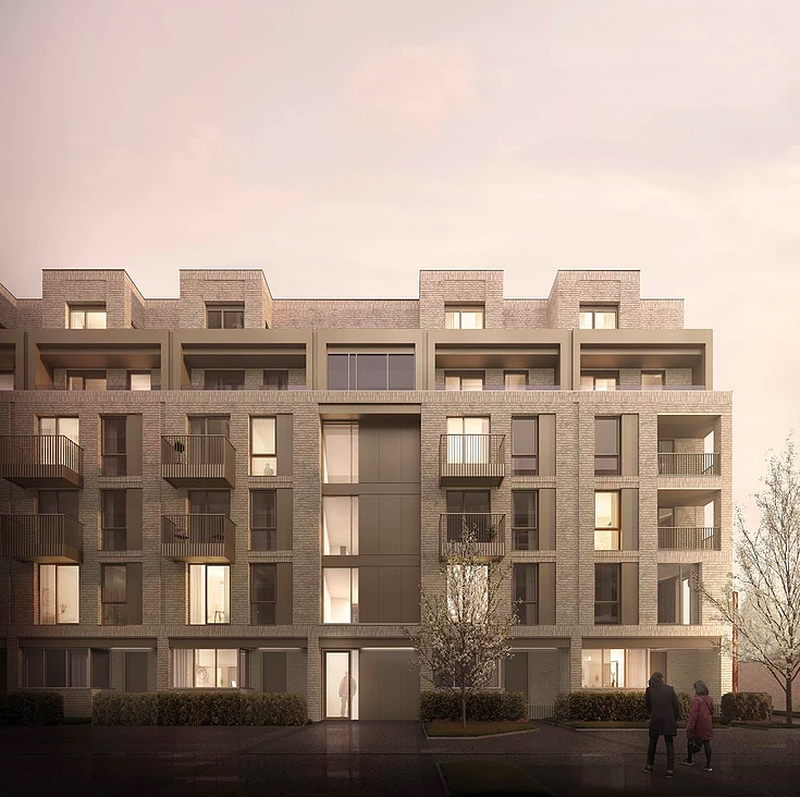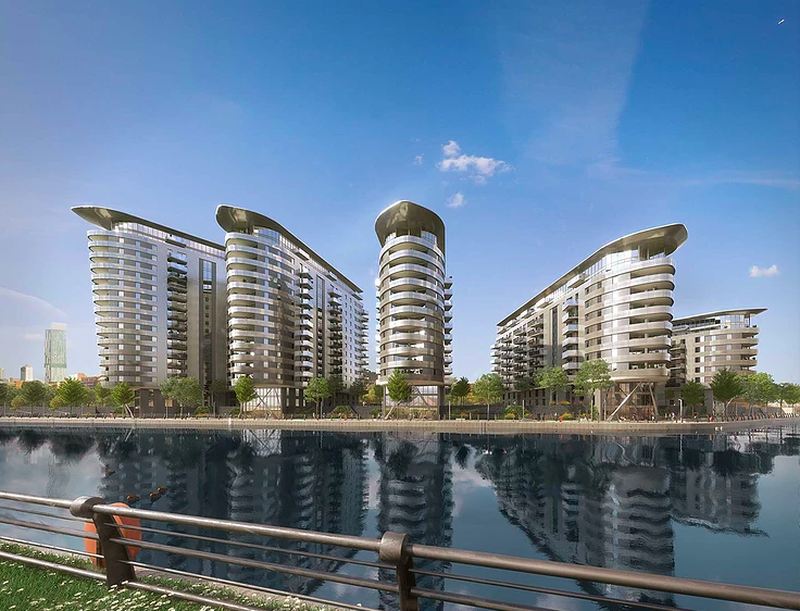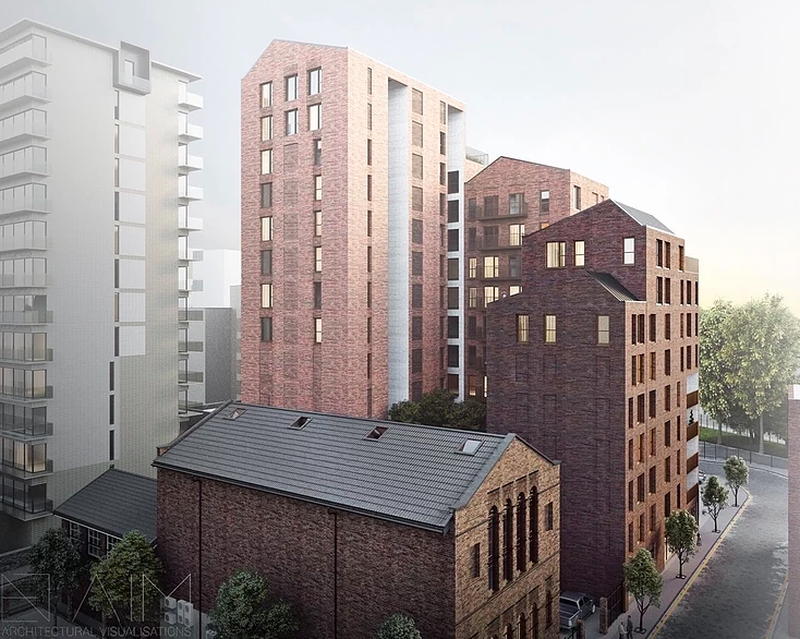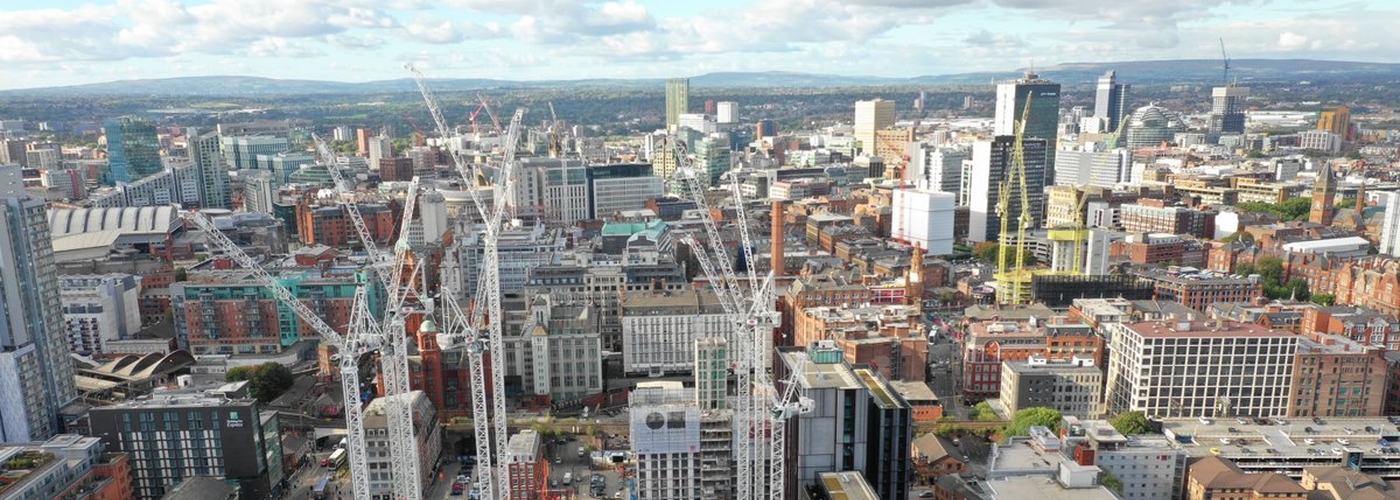It's been the most active January for property on record in Manchester
January is usually a quiet month for property everywhere, but this year at least Manchester has bucked the trend, registering more activity this January than any other on record.
This new height was mainly led by developments racing into construction and groundworks after the festive break. Six schemes have started construction in Manchester this January, while a further eight have started 'groundworks' - the stage before construction.
However, no new planning applications have been validated this month. This hasn't happened since December 2014. An indication, perhaps, that development in Manchester is slowing down - or that Manchester's planning departments have not yet validated planning applications submitted before Christmas.
Traditionally, lots of planning application validations take place in February. For instance, February 2018 and February 2017 both set records for the number of new planning applications made public in their respective years. It's highly likely that February 2019 will be no different.
Allied London's landmark No.1 St Johns tower has been cancelled
Residential
Four of the six schemes which started construction in Manchester in January were residential, increasing the total number of homes under construction in the city to 18,502 (up from 18,330 in December, and 14,340 in January 2018).
Bellward Properties started construction at Cornbrook Works on the edge of the city centre. Designed by Tim Groom and pictured below, the scheme will deliver 363 Build-to-Rent apartments and townhouses above ground floor retail units.

At the other end of town, social housing developer Salix Homes started construction at Canon Green, off Blackfriars in Salford. The 'infill' scheme involves the construction of an eleven-storey building containing 108 apartments for affordable/social rent whilst providing an active frontage onto Blackfriars Street.
Further out, developers AH Old Trafford started renovating Atherton House on Talbot Road, Old Trafford to 48 apartments. The building - which has been empty for several years - will be brought back into use in a scheme designed by Elevate Architects.
Meanwhile, January saw two major residential applications gain planning approval in Manchester. Developer X1 is already on-site at delivering phase one of their Manchester Waters masterplan on Pomona Island, and in March 2018 they submitted a planning application for phase two: three more blocks totalling 526 apartments. The buildings, designed by Fielden Clegg Bradley, are fourteen, sixteen and eighteen storeys in height.
Whilst approving the plan, Trafford's planning officer stressed the need for a refreshed masterplan for Pomona Island to ensure that Trafford Council's ambitions for the site are fulfilled. Landowner Peel Holdings is now expected to draw up a new masterplan for the area, including proposals for a new park and commercial space, before next year.

In Salford, Bradley Manor Ltd won planning approval for The Copper Works, on King Street in Greengate. Designed by Ollier Smurthwaite, the development features three new blocks of varying heights designed in a style which echoes the industrial heritage of the area. 104 apartments sit above a ground floor retail unit intended for A1, A2, A3, B1 & D1 use.
Meanwhile, back in Cornbrook, DeTrafford have revealed proposals for one of the final phases of their Manchester Gardens scheme along Ellesmere Street.

Commercial
Allied London won planning approval for their 102,300 sq ft Media Building at St John's, which is targeted at Manchester's fast-growing tech sector. They also started construction at Manchester Goods Yard, the 341,000 sq ft building which will be home to Booking.com.
This is amidst an announcement that their St John's mega-scheme, originally due to feature over 4,400 apartments, will now take on a more commercial focus, with the landmark No.1 St Johns tower cancelled to be redesigned as offices and a hotel. Whilst this may be one of a few signals that Manchester's residential market has reached its peak for now, this is good news for the city's office market as developers switch their efforts to addressing Manchester's chronic under-supply of office space. More office space would bring more companies in, with more jobs, thus potentially fuelling the next residential boom.
In the Northern Quarter, developer CERT Property have started renovating Hilton House and providing a roof extension to create an extra 2,250 sqft of office space. The scheme, designed by Buttress, has been renamed 'Identity', and involves gutting the building and refurbishing the cladding on the outside.
And in Salford, English Cities Fund and Muse have started groundworks at the latest instalment of the emerging New Bailey business district. Number Three New Bailey will be a six-storey, 157,000 sq ft building occupied by HMRC when it completes in 2021.

Greater Manchester Spatial Framework/Transport
The publishing of the Greater Manchester Spatial Framework at the beginning of January revealed the GMCA's ambition for the city region over the next twenty years.
The plan, which will govern all planning decisions in the region over the next two decades if adopted, allocates over 200,000 new homes to be delivered across Greater Manchester by 2040. 50,000 of these homes will be in the designated City Centre area, which spills into Ancoats, Beswick and parts of Salford and Trafford (but doesn't include Salford Quays). This means 2,500 homes need to be completed every year in the City Centre to keep up with targets. For reference, only 2,285 homes have completed in that area since 2015, although nearly 8,000 are currently under construction and due for delivery over the next two years.
The plan also allocates an extra sixteen million sq ft of office space to be delivered in the City Centre, roughly equating to 53 Number 1 Spinningfields office towers. In Salford Quays, 8,200 homes will be delivered alongside 2.8 million sq ft of office space. Most new homes will be delivered on 'brownfield' land in and around central Manchester, town centres and major transport hubs - although there will be some green belt release as well, concentrated around existing rail and Metrolink infrastructure or conditioned to pay for new transport infrastructure.

An ambitious expansion of the Metrolink network is also envisaged, with new 'tram/trains' (half tram, half train) utilised to facilitate expansion along existing railway corridors. TfGM believes this is the quickest and cheapest way to improve rail provision along existing corridors. It also echoes the way the Metrolink network has already taken over previous rail corridors - namely the Bury, Altrincham and Oldham and Rochdale lines which have progressed from loss-making railway lines to profit-making lines after Metrolink conversion. A new city centre metro tunnel may be required to handle the additional capacity required through the city centre.
There are more tall buildings under construction or proposed here than in Paris, Berlin, Rotterdam, Lisbon and Munich combined
Tall buildings
UrbInfo published its Manchester Tall Buildings Report in January. The Tall Buildings Report is UrbInfo's annual survey of buildings over twenty storeys proposed, complete and under construction in Manchester.
Manchester has a larger tall buildings pipeline than any other European city outside London. There are more tall buildings under construction or proposed here than in Paris, Berlin, Rotterdam, Lisbon and Munich combined.
Key facts:
- 21 tall buildings are under construction in Manchester, while a further 84 are proposed.
- Thirteen planning applications for tall buildings were submitted in 2018.
- 36 new tall buildings were proposed in 2018.
- Residential use makes up 89% of Manchester's tall buildings pipeline.
- It takes 42.5 months on average to build tall buildings in Manchester (from planning application submission to completion of construction).

Article published in association with UrbInfo Manchester
















